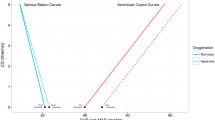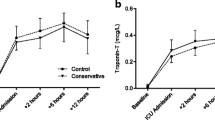Abstract
Background: Mild to moderate hyperoxia is potentially beneficial to patients undergoing open heart surgery. Oxygen Reserve Index (ORI) is a novel parameter that correlates to arterial oxygen tension (PaO2) in the hyperoxic range. This prospective study aimed to assess whether the relationship between ORI and PaO2 remains intact in the setting of open-heart surgery. Methods: This study included patients undergoing valve, aortic arch and coronary artery bypass grafting (CABG) surgeries, on and off pump, between September 1st 2019 and August 31st 2021. Enrolled patients had arterial blood gas samples collected and analyzed after induction of anesthesia and increases in FiO2 in steps of 0.08 with ORI being recorded at the time of sample collection for cross reference and analysis. Results: ORI values showed a statistically significant correlation with PaO2 values in the 100–200 mmHg range (r = 0.8193, p < 0.001). Additionally, there was a significant correlation between ORI and SpO2 values in the range of 95% and 100% (r = 0.529, p < 0.05). Conclusions: The preserved relationship between ORI and PaO2 in the mild and moderate hyperoxic range can allow more precise titration of oxygen therapy to guide therapy targeting normoxia, mildly and moderately hyperoxia. Additionally, it could have a potential use as an early warning system for impeding hypoxia.




Similar content being viewed by others
References
Wilson BJ, Cowan HJ, Lord JA, Zuege DJ, Zygun DA. The accuracy of pulse oximetry in emergency department patients with severe sepsis and septic shock: a retrospective cohort study. BMC Emerg Med. 2010;10(1):1. https://doi.org/10.1186/1471-9227-10-X.
Yoshiya I, Shimada Y, Tanaka K. Spectrophotometric monitoring of arterial oxygen saturation in the fingertip. Med Biol Eng Comput. 1980;18:27–32. https://doi.org/10.1007/BF02442476.
Jubran A. Pulse oximetry. Crit Care. 2015;19:272. https://doi.org/10.1186/s13054-015-0984-8.
Martin DS, Grocott MPW, Jakutis G, Norkienė I, Ringaitienė D, Jovaiša T. Severity of hyperoxia as a risk factor in patients undergoing on-pump cardiac surgery. Acta Med Litu. 2017;24(3):153–158. doi: 10.6001/actamedica.v24i3.3549. PMID: 29217969; PMCID: PMC5709054.
Bae J, Kim J, Lee S, Ju JW, Cho YJ, Kim TK, Jeon Y, Nam K. Association Between Intraoperative Hyperoxia and Acute Kidney Injury After Cardiac Surgery: A Retrospective Observational Study. J Cardiothorac Vasc Anesth. 2021 Aug;35(8):2405–14. Epub 2020 Nov 28. PMID: 33342731.
Hardman JGFRCA, Wills JSFRCA, Aitkenhead ARFRCA. Factors Determining the Onset and Course of Hypoxemia During Apnea: An Investigation Using Physiological Modelling. Anesthesia & Analgesia: March 2000 - Volume 90 - Issue 3 - p 619–624
Ju JW, Choe HW, Bae J, Lee S, Cho YJ, Nam K, Jeon Y. Intraoperative mild hyperoxia may be associated with improved survival after off-pump coronary artery bypass grafting: a retrospective observational study. Perioper Med (Lond). 2022 Jul;19(1):27. https://doi.org/10.1186/s13741-022-00259-y. PMID: 35851431; PMCID: PMC9295444.
Martin DS, Grocott MPW. Oxygen therapy and anaesthesia: too much of a good thing? Anaesthesia. 2015;70:522–7. https://doi.org/10.1111/anae.13081.
Vos JJ, Willems CH, van Amsterdam K et al. Oxygen Reserve Index: Validation of a New Variable. Anesthesia and Analgesia. 2019 Aug;129(2):409–415. DOI: https://doi.org/10.1213/ane.0000000000003706. PMID: 30138170.
Scheeren TWL, Belda FJ, Perel A. The oxygen reserve index (ORI): a new tool to monitor oxygen therapy. J Clin Monit Comput. 2018 Jun;32(3):379–89. https://doi.org/10.1007/s10877-017-0049-4. PMID: 28791567; PMCID: PMC5943373.
Peter Szmuk JW, Steiner PN, Olomu RP, Ploski, Daniel I, Sessler. Tiberiu Ezri; Oxygen Reserve Index: A Novel Noninvasive Measure of Oxygen Reserve—A Pilot Study. Anesthesiology. 2016;124:779–84. https://doi.org/10.1097/ALN.0000000000001009.
Applegate RL 2nd, Dorotta IL, Wells B, Juma D, Applegate PM. The Relationship Between Oxygen Reserve Index and Arterial Partial Pressure of Oxygen During Surgery. Anesth Analg. 2016 Sep;123(3):626–33. https://doi.org/10.1213/ANE.0000000000001262. PMID: 27007078; PMCID: PMC4979626.
Ihnken K, Winkler A, Schlensak C, Sarai K, Neidhart G, Unkelbach U, Mülsch A, Sewell A. Normoxic cardiopulmonary bypass reduces oxidative myocardial damage and nitric oxide during cardiac operations in the adult. J Thorac Cardiovasc Surg. 1998 Aug;116(2):327 – 34. doi: https://doi.org/10.1016/s0022-5223(98)70134-5. PMID: 9699587.
Tsymbal E, Ayala S, Singh A, et al. Study of early warning for desaturation provided by Oxygen Reserve Index in obese patients. J Clin Monit Comput. 2021;35:749–56. https://doi.org/10.1007/s10877-020-00531-w.
Douin DJMD1, Anderson ELRN2, Dylla, Layne MD, PhD2, Rice JD PhD3;, Jackson CLMS3, Wright FL, MD4, Bebarta VS. MD2,3,5; Schauer, DO SG, MS6,7, Ginde AA, MD. MPH2,5. Association Between Hyperoxia, Supplemental Oxygen, and Mortality in Critically Injured Patients. Critical Care Explorations 3(5):p e0418, May 2021. | DOI: https://doi.org/10.1097/CCE.0000000000000418
Hille H, Le Thuaut A, Canet E, et al. Oxygen reserve index for non-invasive early hypoxemia detection during endotracheal intubation in intensive care: the prospective observational NESOI study. Ann Intensive Care. 2021;11:112. https://doi.org/10.1186/s13613-021-00903-8.
Author information
Authors and Affiliations
Contributions
Drs. M. F., H. W., and H. A. designed the trial and collected the data, Drs. M. S. and F. L. analyzed and interpreted the data and drafted the manuscript. All authors have read and approved the submitted manuscript.
Corresponding author
Ethics declarations
Competing interests
The authors declare no competing interests.
Additional information
Publisher’s Note
Springer Nature remains neutral with regard to jurisdictional claims in published maps and institutional affiliations.
Rights and permissions
Springer Nature or its licensor (e.g. a society or other partner) holds exclusive rights to this article under a publishing agreement with the author(s) or other rightsholder(s); author self-archiving of the accepted manuscript version of this article is solely governed by the terms of such publishing agreement and applicable law.
About this article
Cite this article
Fadel, M.E., Shangab, M., Walley, H.E. et al. Oxygen Reserve Index and Arterial Partial Pressure of Oxygen: Relationship in Open Heart Surgery. J Clin Monit Comput 37, 1435–1440 (2023). https://doi.org/10.1007/s10877-023-01001-9
Received:
Accepted:
Published:
Issue Date:
DOI: https://doi.org/10.1007/s10877-023-01001-9




